Collaborative project funded by natural resources grant successfully reduces water pollution in Lake Independence
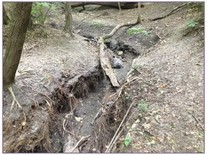
Earlier this spring, work was completed on a major project to repair an eroding ravine within Baker Park and along neighboring properties in Independence and Medina. The unstable ravine that formed west of the campground in Baker Park had been significantly eroding and transporting sediment and phosphorus into Lake Independence.
Protecting the lake from these contaminants is a priority for many organizations in the area because the lake is on the state’s list of impaired waters due to excessive nutrients, notably phosphorus. Excessive nutrients can cause algae blooms, inhibit healthy plant growth, and reduce fish populations.
|
To tackle this large project, the Three River Park District worked in partnership with the Pioneer-Sarah Watershed Management Commission, the cities of Independence and Medina, Hennepin County, and the Lake Independence Citizens Association to secure $416,000 from the Clean Water Legacy Fund in 2018. That grant along with a $59,500 Hennepin County Natural Resources Opportunity Grant and other local funding supplemented the $520,000 project budget required to repair and stabilize the 2,200-foot ravine.
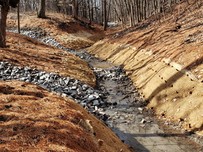
Rock grade control structures were installed at key points along the ravine. The control structures act like stepping stones, helping to slow down the water and gradually lower the water to the lake surface. New vegetation was also planted to stabilize and restore the soil. With the project complete, it is anticipated that it will reduce the amount of phosphorous going into Lake Independence by 134 pounds per year. This accomplishes 15% of the goal for reducing phosphorous flowing into Lake Independence that needs to be met to remove the lake from the impaired waters list.
|
Applications for natural resources opportunity grants encouraged in June
This success story highlights the type of project that can only be accomplished through collaboration among organizations. The county’s Natural Resources Opportunity Grants are intended for these types of large, collaborative efforts by often serving as required match funding for other grants. In an effort to allow grantees to use these funds to leverage state grant programs with deadlines in late summer and early fall, Hennepin County staff will be reviewing and making recommendations for opportunity grants by July 15.
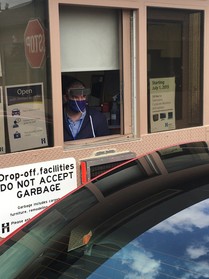
The Hennepin County Drop-off Facilities in Bloomington and Brooklyn Park are open for the public to dispose of hazardous waste, problem materials, and recycling.
Hours
The drop-off facilities are operating with new hours. The facilities are open Tuesday through Saturday from 9 a.m. to 5 p.m. The facilities are closed on Sundays and Mondays.
Changes to materials accepted and guidelines
There have been some changes to the materials accepted. Residents should check guidelines at hennepin.us/dropoffs for updates and materials accepted, and can find specific disposal information for common household materials in the Green Disposal Guide.
Payment, if applicable, is being taken with credit card only (Visa, Discover, Mastercard). For safety, we're temporarily not accepting cash or checks.
Residents should expect longer-than-normal wait times and are encouraged to visit on Wednesdays and Thursdays if possible. Tuesdays and Saturdays are the busiest days at the facilities.
Keeping safe
Drop-off facility staff have adjusted operations to maintain social distancing and enhanced cleaning and disinfecting. Staff now wear masks and gloves.
Follow these steps to ensure the health and safety of yourself and staff:
- Remain in your vehicle unless otherwise directed by staff.
- Wear a mask.
- Store items in the trunk of your vehicle, truck bed, or trailer. Only bring in items that one person can load out of a vehicle by themselves. Staff will remove most items from vehicles.
- Be patient and follow staff instructions.
|
Protecting the last, best remaining natural areas in Hennepin County
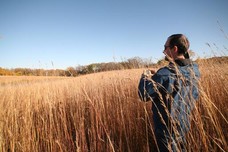
Dave Thill, a natural resource ecologist with Hennepin County for the past 38 years, is retiring in June and entrusting a new generation of ecologists to carry forward his vision of protecting the remaining natural areas in in Minnesota’s most populous county.
Spending an afternoon driving around western Hennepin County with Dave means being inspired by the county’s natural assets. Among the privately owned parcels that have been tilled for farming, fenced-off for grazing, or landscaped and mowed for lawns and gardens, there are remnant habitat gems and connecting corridors that urgently need protection and preservation. There are also the people that live on the land with whom building relationships is critical to protecting these ecosystems.
|
Changing land use means an urgency to protect natural spaces
Land use in Hennepin County has changed a lot over the past four decades. In the 1980s, western Hennepin County had a lot of small farms intermixed with large wooded areas, oak savannas, prairies, and wetlands. The growth of suburbs and expansion of farming has led to the loss of natural areas throughout the county.
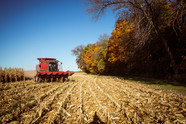
Western Hennepin County is now an area of transition with a mix of new houses on big lots, hobby farms, traditional row cropping operations, grazing land, and old farmsteads. This presents both a sense of urgency and opportunity. There is an opportunity to protect the last, best remaining natural areas in the county, but the next 10 to 20 years are critical for protecting these areas before the land has been developed and the remnant habitats are gone.
Appreciating the uniqueness of our ecosystems
|

Dave explains that the impressive diversity found in the remnant Big Woods maple basswood forests of Hennepin County make them one of the best hardwood forest ecosystems in the world. The understory of maple basswood forests have an amazing variety of spring ephemerals, or wildflowers that bloom for a short time in the spring during that brief period when the frost is gone and sunlight can reach the forest floor. Hennepin County is full of other remnant habitats, including oak savannas, wetlands, tamarack bogs, and prairies.
Establishing conservation easements to permanently protect natural areas
|

Hennepin County is working to protect ecologically significant areas remaining in the county and establish natural resources corridors to connect them and large regional parks. Partnering with landowners to establish conservation easements is an important strategy for the county to achieve these goals. Conservation easements are a set of development restrictions that a landowner voluntarily places on their property to permanently protect its natural resources.
Conservation easements are one of the most effective tools for permanently protecting natural areas on private property. They allow landowners to protect what they value about their land, whether that be the open space, views, rural character, wildlife habitat, mature forest, and more. The county has funding available to compensate landowners for permanently protecting their property with a conservation easement. Funding for this is from the state's Lessard-Sams Outdoor Heritage Fund. Establishing a conservation easement also means the landowner can get technical support and funding to do habitat restoration projects on protected properties.
Learn more about establishing a conservation easement and permanently protecting your land.
|

Even through uncertain and changing times, households participating in the county’s Zero Waste Challenge were successful at making significant changes to reduce the amount of waste their households produce. The 2019-2020 round of the challenge wrapped up in May, with 41 households successfully completing the 8-month program.
Through the challenge, average waste generation decreased from 1.62 pounds per person per day to 1.53 pounds. This was despite the stay-at-home order that made it much harder to reduce waste. During April, national residential waste volumes were reportedly up between 15 and 30 percent, while participants in the challenge reported an average six percent reduction in waste per person! It’s estimated that participating households avoided almost 400 pounds of waste in the month of April alone compared to their initial waste levels last fall.
Many people are interested in taking steps to reduce waste but aren’t sure where to start. There are a wide variety of actions you can take to reduce waste. Here are some changes that made Zero Waste Challenge participants successful.
-
Improving recycling and organics recycling: Taking organics to a drop-off site, adding backyard composting, learning about wish-cycling (and stopping!), and taking waste to a Hennepin drop-off facility.
-
Preventing waste in the first place: Getting off junk mail lists, cutting back on online purchases, avoiding single-serving snacks, buying a few pantry staples in bulk, practicing meal planning, and freezing food to prevent wasting it.
-
Eliminating disposables: Using reusable cleaning cloths, napkins and face wipes, bathroom cups, and menstrual products, choosing cloth diapering, successfully potty training, and remembering bags for groceries and produce.
-
Getting crafty: Making green cleaning products, making homemade glasses cleaner, repurposing items like old picture frames and recyclables, planting seeds in cardboard egg cartons, and sewing reusable masks out of old T-shirts.
Join the online Zero Waste Challenge
An online version of the Zero Waste Challenge is currently being offered through June. The challenge will help you identify waste-reduction actions to take, connect you with resources to help you reach your goals, show you the impact of taking action, and provide support and motivation along the way.
Join over 400 others already taking the challenge. In the first week of the challenge, these participants have committed to taking more than 1,500 actions and have already reported composting more than 200 pounds of food, avoiding 150 pounds of packaging, spending 700 minutes learning about zero-waste topics, and preparing 25 zero-waste meals.
Sign up now for the online Zero Waste Challenge!
|
 The Hennepin County Choose to Reuse program has recently launched new efforts to support local reuse retailers. The county is offering marketing and merchandising supporting, facilitating online networking events to help retailers collaborate, and connecting retailers to grants and resources for small businesses.
These offerings have been flexible and responsive to how COVID-19 has impacted reuse retailers. Some retailers have reopened and adapted their operations to provide a safe shopping experience, while others are still figuring out how to move forward.
Reuse retailers need our support, which is why the county has also launched a new consumer education campaign – Join the Circle – to encourage residents to shop used. When you buy new, the price tag doesn't reflect all that's needed to produce, package, transport and eventually dispose of your purchases. This makes buying used a powerful strategy to preserve our natural resources and reduce your carbon footprint while saving money.
Be sure to check with individual retailers about their current operations, and see our recent feature that offers 7 steps to organizing your donations while you’re at home. You can also sign up to Join the Circle and pledge to buy used. You’ll receive waste reduction tips in your inbox as well as special sale offers from retailers.
Salvage, reuse, and recycle building materials from your next home remodeling or construction project
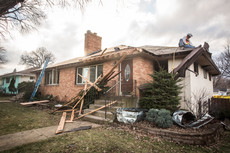
Construction season is upon us, which can mean more construction and demolition waste going to the landfill. In fact, about 70 percent of building materials in typical demolition or remodeling project end up in the landfill. Deconstruction, which involves manually taking apart a building and sorting materials for recycling and reuse, can help you avoid most of the waste generated in a typical construction project.
To help divert waste and keep valuable building materials in use, Hennepin County has grants available to homeowners and developers to deconstruct buildings to salvage building materials rather than demolish them. Homeowners and developers in the cities of Brooklyn Center, Brooklyn Park, Deephaven, Edina, Excelsior, Greenwood, Hopkins, Minneapolis, Maple Grove, St. Louis Park, and Woodland can receive grants of up to $5,000 for deconstructing rather than demolishing. Maple Grove has recently been added to the list of cities eligible for grant funding, and additional cities will be added as the program expands. Learn more about the grants including eligibility and requirements.
For more information, contact Olivia Cashman at olivia.cashman@hennepin.us or 612-348-4843.
|
To provide additional time for community organizations to apply for Hennepin County environmental education grants, the deadline to apply, which was originally yesterday, has been extended until 3 p.m. on Thursday, June 4, 2020.
Hennepin County awards two types of environmental education grants:
- Environmental action grants for projects that focus on motivating adults to take one or two actions to protect the environment.
- Youth environmental education grants for projects that engage youth in learning about the environment and becoming environmental stewards.
Access the application materials and submit your application on the Hennepin County supplier portal.
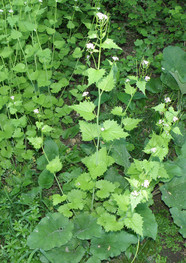
When you are dealing with noxious weeds like buckthorn or garlic mustard on your property, it’s important to consider how you are going to manage or dispose of the plant material.
You should first try to kill but not remove the weeds from an infested area when possible. You do not have to remove noxious weed materials from your property. In fact, it is preferred that you leave materials on site and either destroy them or allow then to naturally degrade.
If you must remove materials from an infested site, you should first contact the Hennepin County Agricultural Inspector, Matt Stasica, at matt.stasica@hennepin.us or 612-235-1237 to discuss how to properly contain and transport the materials to an approved disposal site. Approved disposal sites will properly dispose of noxious weeds and have a system in place to destroy any propagating parts of the plant to prevent any future seed transfer.
Disposal of noxious weeds into solid waste trash bins is against the law. Learn more about proper management and disposal of noxious weeds from the Minnesota Department of Agriculture.
|
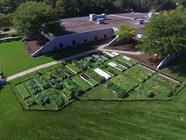
Each spring, free compost is available to Hennepin County schools with organics recycling programs. The finished compost is meant to help “close the loop” on organics recycling. The food and other compostable waste collected by schools from their cafeterias is delivered to commercial composting the facilities, and the compost they receive in the spring can go back into gardens to improve the soil.
In mid-May, the county partnered with the Mulch Store, one of the compost sites where school organics recycling is delivered, to offer the free compost. Despite schools being closed, 29 schools received compost that facilities staff, garden managers, and parent volunteers used to add nutrients to the soil in areas like vegetable gardens, flower beds, around trees, and in greenhouses.
For more information, contact Kira Berglund at kira.berglund@hennepin.us.
|
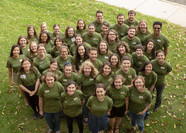
The Minnesota Pollution Control Agency is looking for 44 individuals to serve with local government agencies, nonprofits organizations, and educational institutions as a Minnesota GreenCorps, a program of AmeriCorps. GreenCorps members serve a full-time, 11-month term from September 2020 through August 2021. Hennepin County has requested a GreenCorps member to focus on reducing food waste
MN GreenCorps members improve the environment and strengthen communities while gaining green job skills and networking with environmental professionals. Member activities include delivering environmental education, implementing sustainability related projects, collecting and analyzing data, improving habitat, implementing recycling programs, collaborating with community members, and mobilizing volunteers. Members receive a monthly living allowance, health insurance, student loan forbearance, and an education award.
Applications are due by Monday, June 15. Learn more and apply. For more information, contact mngreencorps.pca@state.mn.us.
|

June is the wettest month in Minnesota. When the rain hits the street, it picks up leaves and debris and washes into storm drains that drain directly into the nearest lake or river, where the excess nutrient can feed unwanted algae growth all summer long.
Do something to stop the pollution – adopt a drain! It takes 15 minutes, twice a month, to adopt a storm drain. Watch this quick video to learn more about how clean water beings at your curb.
Follow these tips to get started:
|
- Get your cleaning gear together: A broom, a rake, a trash grabber, gloves, an orange cone and/or safety vest, a snow shovel or dustpan, and a pail or yard waste bag. (A rolling pail could be deluxe if you have one.)
- Never remove the grate or otherwise attempt to clean inside the catch basin. Clean only the surface of the storm drain grate and the area around it. If the drain seems to be plugged or have any problem, contact city staff and they will send workers to address the issue.
- Safety first. Wear gloves to protect your hands and be careful when picking up leaves and trash. You might want to use a trash grabber to collect debris. Consider wearing bright or reflective clothing. Do not stand or crouch on busy streets.
- Separate and dispose of the waste. Sort it into the appropriate bin: recyclables (glass and plastic bottles, cans), yard waste (leaves, grass clippings, sticks, and sediment), and trash.
Learn more about how to keep your neighborhood clean and protect local waterways at adopt-a-drain.org.
|